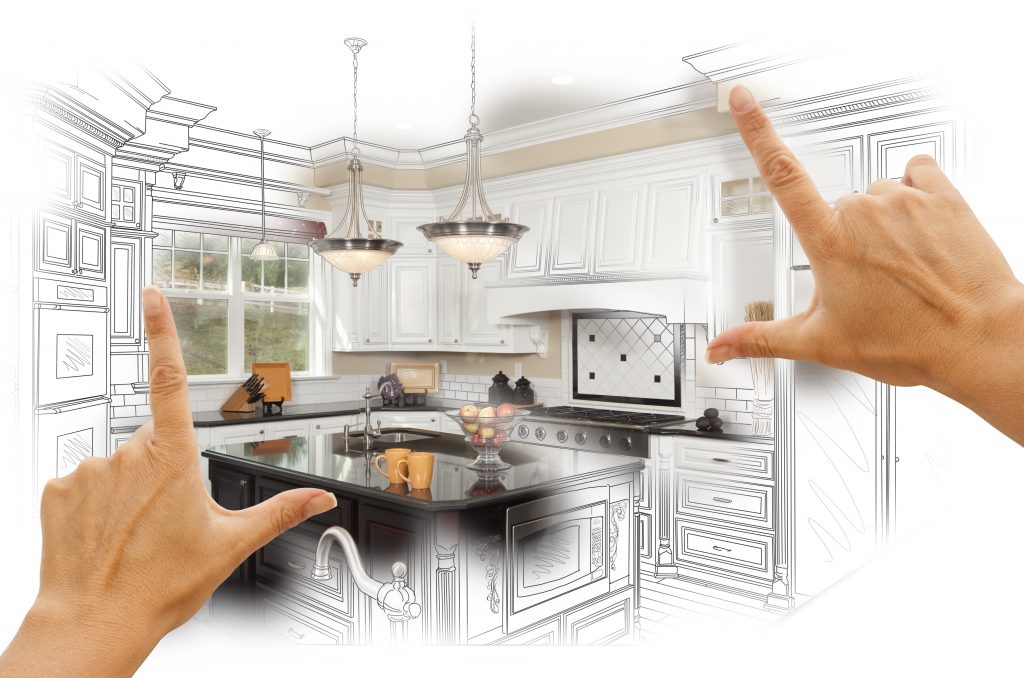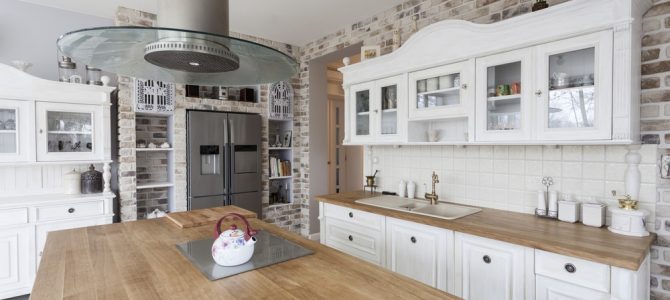Butcher block countertops have been created from rectangular slabs of wood that are glued together with an adhesive. The wide flat slabs provide a smooth and solid surface for food preparation while the thinner slabs are typically found in standard butcher shops, meat processing facilities and deli’s. While they are commonly seen in residential kitchens, butcher block countertops have also been used in the kitchen of restaurants and hotels. A butcher block countertop is designed to withstand high temperatures and consistent use. These counter tops are a popular choice because they take up less space than granite, marble, and engineered hardwood.

In order to build a strong and durable countertop, the laminate is overlapped by a textured, medium density fiber (MDF) top layer and two thin layers of dark grain or light color stain or wood color. There are three common types of laminate designs that are used in butcher block countertops. There are two light colors – light brown and light gray – and one dark color – dark brown. Dark grain provides a warm, rustic feel to the kitchen while light color allows for more visibility and visual disturbance from food spillage and other messes.
Another benefit of having a butcher-block countertop in your kitchen is its durability. The material is very tough and able to withstand high-impact activities like chopping and slicing. They are also stain and heat resistant, which makes them ideal for use in high traffic areas. They can withstand extreme temperatures and are not affected by acidic liquids. These countertops can be installed on top of the existing floor or cabinet surface using adhesive, concrete or steel clips. They are very affordable and can add a significant value to your kitchen.
Because of their durability and strength, butcher block countertops can be used as cutting boards. To help maintain their appealing look and feel, it is important to wipe down the board after each use with a damp cloth or sponge. Chemical cleaners may be used for stubborn blemishes but should only be done when the surface has been sealed.
Because they are quite versatile, butcher block countertops provide homeowners with many design options. For example, you can create an all-white countertop by painting the entire countertop white. Alternatively, you could choose a clear version so that custom colors can be applied. Another option is to paint the entire countertop in a single tone, which is also called a monochromatic scheme. If the countertop is made from materials like granite or quartz, then a special black paint will be needed. No matter what shade or color you choose, you’ll be able to find many coordinating accent colors that will blend well with the kitchen cabinets and benchtops.
Like many engineered solid surfaces, butcher block countertops have the ability to serve as the perfect design element. In addition to being available in a variety of colors and materials, different styles will also provide different levels of heat absorption. Some, like the Glassine style, will absorb high temperatures from the cooking or hot appliances while others, like the Mission style, will not absorb heat at all.
Because of their durability, an extremely popular option with kitchen designers is the installation of granite counter tops. By providing a high-quality surface that can withstand high-heat, acidic foods like tomatoes and citrus fruits, granite is an excellent choice for chefs and cooks alike. Because it is impervious to staining, food preparation on a butcher block countertop is safe from staining as well. Granite is also the material of choice because of its ability to reflect heat, which means your cooking will take on a nice warm feel.
One more kitchen design trend that has emerged with the use of butcher block countertops is the use of wood countertop material. While wooden counters provide a unique appearance, they are also very durable. The application of a sealer on wood countertops can help to protect the wood’s natural grains from being damaged. Plus, wood countertop material has the benefit of allowing homeowners to customize the appearance of their kitchen countertops. While not the most attractive kitchen design trend currently available, wood countertops offer an attractive alternative to fabricated countertop materials.


